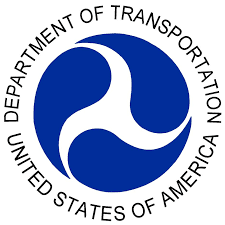FHWA Highlights Efforts to Improve Safety for People Walking, Bicycling and Rolling Made Possible by the Bipartisan Infrastructure Law

New guidance released today will help communities carry out plans to improve cycling, walking, rolling, and shared micromobility
WASHINGTON – As part of National Bike Month, the Federal Highway Administration (FHWA) today announced new guidance to support bicycle, pedestrian and micromobility projects reflecting significant funding opportunities made possible by the Bipartisan Infrastructure Law. The announcement is the latest in a series of actions by the agency to make travel safer for bicyclists, pedestrians, and other road users through its work implementing the U.S. Department of Transportation (USDOT) National Roadway Safety Strategy (NRSS).
“People who walk and bike are at the heart of our transportation system and thanks to historic Bipartisan Infrastructure Law funding, we have an unprecedented opportunity to design and build a 21st century transportation system that meets the needs of all users,” said Federal Highway Administrator Shailen Bhatt. “The law also provides more flexibility to help cities and states address active transportation needs. We are open to new ideas and committed to working with our partners to make this transportation vision a reality so that biking, walking and other ways to travel are safe, convenient and enjoyable for everyone.”
FHWA’s new bicycle and pedestrian guidance provides updated information and guidance to FHWA Division Offices on Federal legislation, policies, and reference materials related to bicycle, pedestrian, and shared micromobility programs and projects. The Bipartisan Infrastructure Law expanded funding opportunities, promoted Complete Streets policies, and modified eligibility related to bicycling and walking. FHWA’s updated guidance describes the range of opportunities available under the law to improve conditions for bicycling, walking, and shared micromobility. In addition to incorporating these changes, the guidance provides information on many Pedestrian and Bicycle Funding Opportunities and planning and design resources that State and local agencies can use to address safety and connectivity among multiple modes of travel.
Other recent USDOT actions taken to improve bicycle and pedestrian safety include the following:
- FHWA has updated its Lighting Handbook. The revised document will serve as a resource for lighting designers and State, city, and town officials interested in improving safety using common roadway lighting applications, with a focus on how best to apply roadway lighting, a proven safety countermeasure supported by FHWA.
- In March, FHWA provided updated guidance to its division offices to support States interested in receiving FHWA approval of State procedures and criteria for resurfacing, restoration, and rehabilitation work (often referred to as RRR projects) on roads on the National Highway System. RRR projects provide an opportunity to update roadways at little additional cost and are a key strategy for improving safe access for all road users. The updated guidance includes a new section on networks that provide access for different modes of travel and encourages use of a Complete Streets Design Model. The updated guidance will help fulfill FHWA’s commitment to prioritizing safety for all road users in all Federal highway investments and reflects more than 30 years of research by the agency and others.
- Safe Streets and Roads for All Grant Awards: In February, USDOT announced a historic $800 million in grant awards for 511 projects through the new Safe Streets and Roads for All (SS4A) Grant Program, a record amount of funding to improve road redesign and intersections and address traffic injuries and fatalities. FHWA is working with several recipients that have already executed grant agreements. The second round of funding is now open for applications.
- Complete Streets Funding for States: In January, FHWA announced it will use a waiver included in the Bipartisan Infrastructure Law to help accelerate Complete Streets-related activities that can improve safety. Under the law, the non-Federal match requirement for the use of State Planning and Research and Metropolitan Planning funds for Complete Streets planning activities can be waived by FHWA and, in turn, help reduce the costs of planning for Complete Streets by States and Metropolitan Planning Organizations. Guidance on the use of the waiver builds on “Moving to a Complete Streets Design Model: A Report to Congress on Opportunities and Challenges,” FHWA’s 2021 Report to Congress detailing its commitment to the Complete Streets design model.
For information on resources available to improve safety for bicyclists, pedestrians and other road users, visit https://highways.dot.gov/safety/pedestrian-bicyclist. Additional FHWA Bike-ped resources and information can be found at the FHWA Bicycle and Pedestrian Program.


